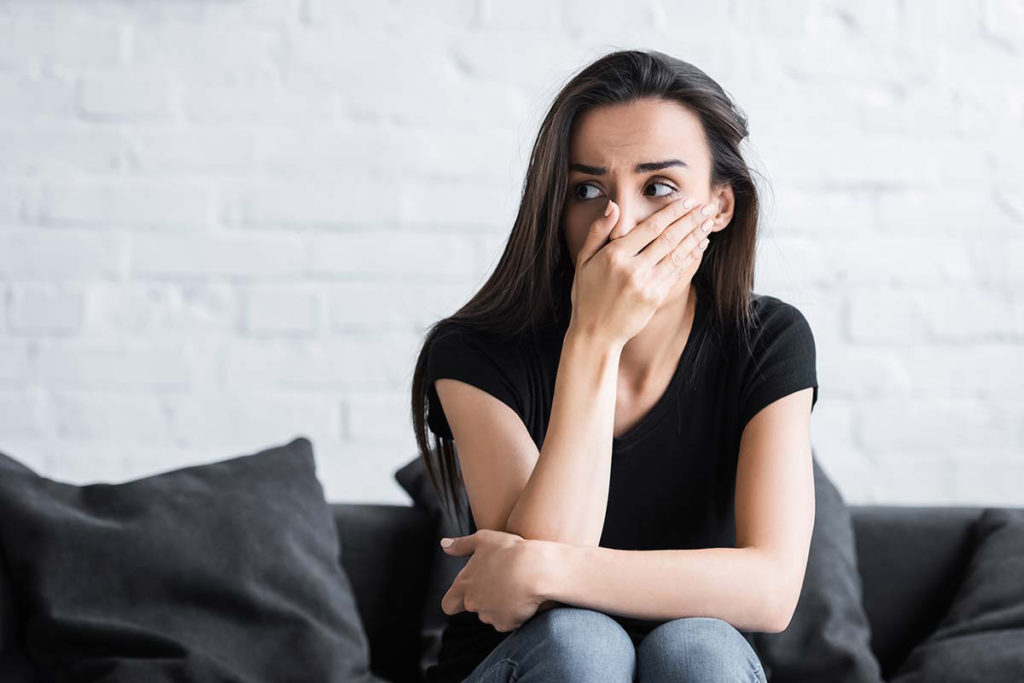Specific phobia is a medical term used to describe a persistent, irrational fear-based reaction to things or situations that have a minor or nonexistent potential to cause harm. Various people can develop this type of response to almost anything. However, some phobic reactions occur much more frequently than others. Women and girls develop specific phobias much more frequently than men and boys. The types of phobias females develop also tend to differ from the phobias found in males. The presence of a specific phobia may increase a woman’s risks for a variety of other mental health problems. Here we take a dive into specific phobias in women.
Specific Phobia Basics
Specific phobias were once known as simple phobias. According to guidelines established by the American Psychiatric Association, an adult with a specific phobia has symptoms that include prominent and ongoing fear toward a specific object or situation; awareness that this fear-based reaction is irrational; development of a panic attack or other anxiety-based reactions when exposed to the source of fear; consistent attempts to avoid the source of fear; and the presence of emotional distress or avoidance-related behaviors that significantly disrupt the affected individual’s ability to participate in daily life. Unlike adults, children often don’t understand that their phobic reactions are irrational. Common specific phobias include:
- A general fear of heights (acrophobia)
- Fear of snakes (ophidiophobia)
- A fear of being in an enclosed space (claustrophobia)
- Fear of spiders (arachnophobia)
- A fear of darkness (nyctophobia)
- Fear of contracting an unspecified disease (hypochondriasis)
- Fear of contracting a specific disease (nosophobia)
- A fear of coming into contact with germs (germophobia or mysophobia)
Other widespread specific phobias include:
- Fear of lightning and thunder (astraphobia)
- A fear of hypodermic needles and/or injections (trypanophobia)
- Fear of encountering the number 13 (triskaidekaphobia)
Phobias to specific things or situations typically first appear in teenagers or younger children; in most cases, these phobic reactions continue into adulthood in some substantial form. No one knows why any given person develops a specific phobia, the National Institute of Mental Health reports. However, potential causes or underlying factors include changes in brain chemistry that promote the onset of anxiety, genetic predisposition, mimicry of phobic adults during childhood, and details of a person’s social or cultural background. Roughly 19 million adults in the US have some form of specific phobia.
Frequency in Women
Women develop specific phobias roughly twice as frequently as men. In addition, women tend to predominate in certain phobia categories. For instance, women account for anywhere from 75 to fully 90 percent of all people who have phobias to specific situations, specific animals or specific events that occur in wild or natural environments. Women also account for as much as 70 percent of all people who have phobic reactions to needles or injections. Men, on the other hand, have a greater tendency to display symptoms of disease-, germ- and height-related phobias.
Risks for Other Disorders
Statistically speaking, people with specific phobias develop certain other mental health problems including depression, generalized anxiety disorder (GAD) and most other forms of medically serious anxiety-more frequently than people without specific phobias. According to a retrospective review published in 2010 in the journal Social Psychiatry and Psychiatric Epidemiology, when people develop specific phobias and other psychiatric problems, the phobia typically appears first. This means that the presence of a social phobia may act as a trigger or risk factor for many of the most common mental disorders. In addition to drawing general conclusions about specific phobias and later mental health, the review in Social Psychiatry and Psychiatric Epidemiology also examined the link between specific phobias and women’s mental health in particular. The authors of the review concluded that, when compared to women without specific phobias, women with specific phobias have roughly twice the chance of developing generalized anxiety disorder, some other form of anxiety-related illness, or some form of depressive illness.
Considerations
Except for obsessive-compulsive disorder (OCD), women consistently develop anxiety-related disorders twice as frequently as men. Apart from any biological explanation, factors that appear to make women more susceptible to specific phobias and other forms of anxiety include ongoing social or cultural forces that encourage women to consider others before considering themselves, as well as family dynamics that encourage this same outwardly focused behavior. In addition, women generally have more leeway to express themselves emotionally; this may mean that women simply tend to express their anxiety more openly, while men tend to suppress or underreport similar or identical anxious feelings. Getting help for specific phobias in women can make life easier to navigate. If your loved one is struggling with a specific phobia, Promises Treatment Center is here to help. Call 844.875.5609 to learn about treatment options.

